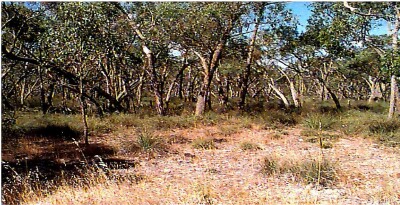
 |
General Land Unit Description:
This land unit comprises areas with reasonably deep sand deposits, mainly north of the Kanawinka fault. The vegetation commonly marks the distinct changes from a landscape comprising of deep sand to one of shallow sand. The major tree species on the deep sand is Brown Stringybark, with an understorey of heath vegetation, such as Blackboys and Tea Trees. Yellow Gums prefer the shallower sandy topsoils. The major landform in this land unit is gently undulating plains where there are gentle rises and low dunes. The common soil type on the gentle rises and low dunes is a sandy topsoil over mottled clay. The depth of sand is variable (often deeper than 50 cm) similar to this site, and can be as deep as two metres in some areas. The subsoils can be strongly acidic (Kurosol), although Chromosols and Sodosols also occur. Ferruginous nodules above the clay horizon are common. There are minor areas where dunes are the dominant landform. Podosols, Tenosols and soils with a deep sandy topsoil over a clay subsoil occur on the steeper dunes and Chromosols or Kurosols occur on the gentler dunes, with Sodosols and Vertosols on the swales and drainage depression. Podosols are soil types with a deep sandy profile that have a ‘coffee rock’ layer commonly at depth.
|




